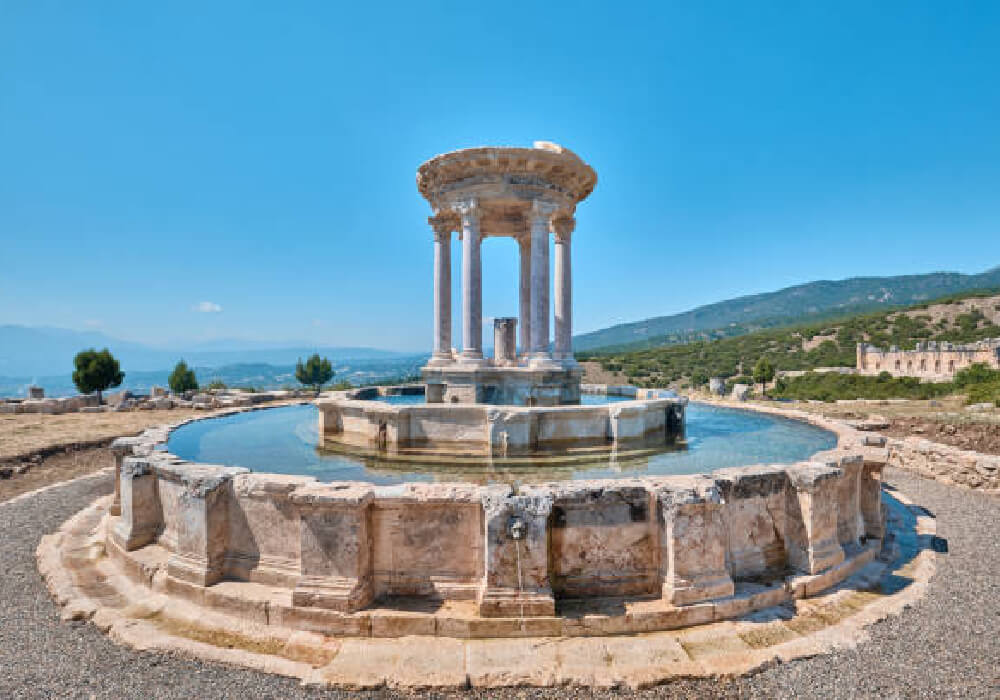
Cibyra or Kibyra, also referred to as Cibyra Magna, was an Ancient Greek city near the modern town of Gölhisar, in Burdur Province. It lay outside the north-western limits of the ancient province of Lycia and was the chief city of an independent state known as Cibyratis. Since 2016 it has been included in the Tentative list of World Heritage Sites in Turkey.
The city is mentioned by ancient literary sources. According to Strabo, the Cibyratae (Ancient Greek: Κιβυρᾶται) were said to be descendants of Lydians who migrated and occupied the Cibyratis region and subdued the neighbouring Pisidians. A short time after their arrival they moved their settlement to a new city. The move to the city is supported by archaeological finds at the Uytuptnar site about 18 km away from Cibyra where ruins from the early Iron Age were probably the previous settlements dating from around 3-4th c. BC before the great move.
During Eumenes II sovereignty (197-159 BC), Cibyra seems to have been ruled by the Kingdom of Pergamon.
The city grew to be powerful in the second century BC, Ancient sources and other written documents indicate that Kibyra was famous for its blacksmithing, leather processing and horse breeding. Other research shows that pottery production was very intense in the area also. Its territory extended between Pisidia and the adjoining Milyas to Lycia and the Peraea of the Rhodians. At this time it joined with three neighbouring Lycian towns, Bubon, Balbura, and Oenoanda, to form a confederation called the Tetrapolis. Within this confederation, the other three cities had one vote, but Cibyra had two votes, since it could muster 30,000 infantry and 2,000 cavalry.
Cibyra is first mentioned by Livy in his account of Ganaeus Manlius Vulso's operations in 189 BC during the Galatian War. Manlius approached Cibyra from the upper part of the Maeander river valley and through Caria. He probably advanced upon it by the valley of Karaook, through which a road led from Cibyra to Laodicea on the Lycus. Manlius demanded and got from Moagetes I, the tyrant of Cibyra, 100 talents and 10,000 medimni of wheat. Livy says that Moagetes controlled Syleum and Alimne, in addition to Cibyra. William Smith suggested that Alimne could be identified with the remains of a large town on an island in lake Gölhisar (east of modern Gölhisar), which were connected to the mainland by an ancient causeway. Following the Treaty of Apamea in 188 BC, Cibyra became part of the Attalid Kingdom.